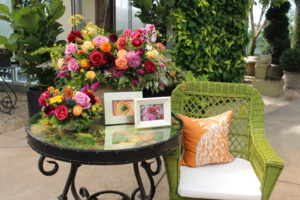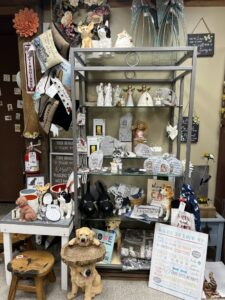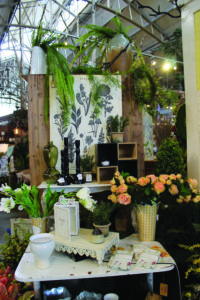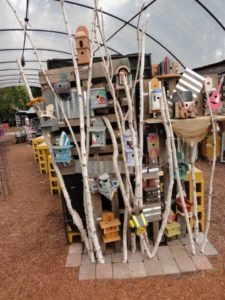
Who’s Driving Your Bus?
Who’s driving your bus? It’s a fairly straightforward question that most of you would answer, ‘I am!” After all, it’s your store and you get to set the rules, you get to select the merchandise that will be offered to the customer, you’re the product expert with lots of horticulture education, you have the power to determine pricing, and you are the one who controls the customer’s experience.
So if the consumer would just follow our rules and buy what we have when we have it, life would be easy, and everything would be great, right?
But the days of us believing that we control our own destiny are long gone. As Seth Godin, one of my favorite marketing gurus, stated, we need to flip the way we approach marketing (and our customers!), from “Pay attention, I want you to buy what I have” to “I’ve been paying attention, and I think I can offer you what you want.”
In reality, the customer is driving your bus and you’re just along for the ride; they truly have the power and more alternative choices than ever before! Yes, you’re still the product expert, but if what the customer is looking for isn’t what you have available, it will be a difficult road to success for you and your customer. And to add to the complexity, your average customer has absolutely no idea as to what product he/she is looking for when they walk in your door.
Understanding Your Customer
Now, more than ever, you need to truly study and understand exactly who your consumer is, listening for their needs, wants and desires, and then bringing in the products that will satisfy the customer. There’s a disconnect between the way we and our customers view things; we sell plants, while your customers bring needs and desires, and look for plants and flowers to satisfy these needs. So, what are some of the things that customers are looking for?
- Solutions
- Satisfaction
- Success
- Fun
- Quality of life enhancements
- Emotional connections
- Recreation
- Self-reliance (veggie gardening)
- Environmental concerns and playing a personal role in climate control
- Inspiration
- Imagination
- Education
- Convenience
- Sustainability (pollinator gardening)
- Engagement with nature
And the list goes on…
The premise is simple: the customer brings you a need, you satisfy the need with a plant or flower, and the customer walks away happy; this is the essence of a great customer experience that builds long-term mutual trust! But this is one of those “says easy, does hard” things. To accomplish this goal, you and everyone on your team must learn to look at your business, every day and every facet of it, through the lens of the customer, not your own. This goes beyond a mindset shift, it must become an integral foundation of your company’s culture. And now, at the beginning of your spring season, is an ideal time to begin this journey to become more consumer-centric!
The Customer’s Perspective
Try this for a starter. Enter your garden center from the parking lot, just like a customer, and look at it through their lens. Walk the outdoor area first, looking at your product groupings, merchandising, signage and plant tags. As a normal customer, are you inspired by what you see, increasing the likelihood that you’ll buy something? Are you using color to help the customer visualize what the products would look like in their own homes and yards? Have you provided vignettes and groupings of different plants and flowers that would stir the imagination and give ideas for projects the consumer can take home with them? Is your merchandising and category identification logical, making it easy for the consumer to go in the right direction without asking for help? Do your product signs offer enough education to assist the customer to make an intelligent choice to be successful when they plant the product at home? Is it easy for them to know what is needed and how to plant a butterfly or bee-friendly garden, without asking for help?
I think you can start to see how looking at your store through a customer’s eyes is much different than the way you’d look at your facility from an operations perspective.
When I visited stores as the lawn and garden manager for a national discount store chain, I would enter the store through the garden center before announcing my arrival to the store management team. I browsed the garden center, looking through the eyes of a customer. I tried to talk to the garden center team to get their candid comments without interference from the store management. And I always asked these questions:
- What items or categories were customers asking for that we didn’t carry in our assortment? If I got the same responses as to missed sales items in a market, we’d definitely look at adding it to our mix.
- What do you do if you have a customer ask for a product that we didn’t have/couldn’t get, and didn’t fit in our assortment mix, like topiaries or large-diameter trees? The general response was that they just turned the customer away, stating that they simply didn’t carry that item. I suggested that, rather than provide that response, you refer the customer to one of your competitors in the market, generally an IGC, who you knew stocked that type of product. Most of my team was incredulous with this guidance until I explained that it was more important to satisfy the customer’s needs than it was to give a competitor that sale. By taking this approach, we satisfied the customer, earned his/her respect and trust, and developed a long-term customer for those items we did carry.
It takes time to change corporate cultures and get your whole team on board. But if you’re committed to it and reinforce the importance of it to your team, with consistent repetition on looking at your operation through a customer’s lens, you’ll see positive results for your business.
The consumer is now driving your bus. If you understand where the bus is heading and are prepared for the new direction it’s taking, hop on board and enjoy the ride!


















 Videos
Videos





